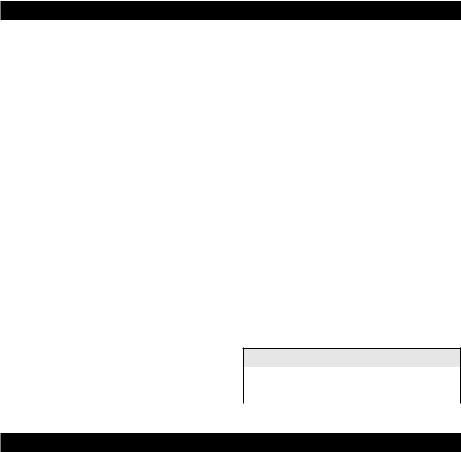Schumacher SC-7500A User Manual

OWNER’S MANUAL
Model SC-7500A
For 6 and 12-Volt Batteries
SpeedCharge™
computer |
|||
smart™ |
|||
2 C H A R G E |
75S T A R T |
||
a m p |
|
a m p |
|
S L O W |
30 |
E N G I N E |
|
12 |
|
a m p |
|
|
|
F A S T |
|
|
|
|
C H A R G E |
Fully Automatic
Microprocessor Controlled
Battery Charger with
Engine Starter
CAUTION: |
|
Read all Safety Rules and Operating Instructions, |
|
and follow them with each use of this product. |
|
Schumacher Electric Corporation |
|
Mount Prospect, IL 60056 U.S.A. |
|
Send Warranty Product Repairs to: |
|
Customer Service Returns |
|
P.O. Box 280,1025 E. Thompson, Hoopeston, IL 60942-0280 |
|
Questions? Call Customer Service: 1-800-621-5485 |
0099000621/0206 |
|

TABLE OF CONTENTS |
|
IMPORTANT SAFETY INSTRUCTIONS .................................................................... |
3 |
PERSONAL SAFETY PRECAUTIONS ...................................................................... |
4 |
BEFORE USING YOUR BATTERY CHARGER ......................................................... |
5 |
Plugging It In.......................................................................................................... |
5 |
Assembling Your Charger...................................................................................... |
5 |
Using An Extension Cord...................................................................................... |
5 |
PREPARING YOUR BATTERY TO BE CHARGED ................................................... |
5 |
OPERATING INSTRUCTIONS ................................................................................... |
6 |
Charging Battery In The Vehicle........................................................................... |
6 |
Charging Battery Removed From The Vehicle...................................................... |
7 |
Using Engine Start................................................................................................. |
7 |
USING YOUR BATTERY CHARGER ......................................................................... |
8 |
CHARGER CONTROLS ............................................................................................. |
9 |
CONTROL PANEL GUIDE ....................................................................................... |
10 |
USING THE BUILT-IN BATTERY TESTER ............................................................... |
11 |
USING THE BUILT-IN ALTERNATOR TESTER....................................................... |
12 |
BATTERY PERCENT AND CHARGE TIME ............................................................. |
13 |
CHARGING TIPS ...................................................................................................... |
14 |
MAINTENANCE AND CARE .................................................................................... |
14 |
TROUBLESHOOTING .............................................................................................. |
15 |
WARRANTY............................................................................................................... |
16 |
PLEASE SAVE THIS OWNER’S MANUAL AND READ BEFORE EACH USE.
Model SC-7500A Microprocessor Controlled, Fully Automatic Operation Battery Charger with Engine Starter Plus Battery and Alternator Tester offers features to accommodate the needs for home or light commercial use. This manual will explain how to use the battery charger safely and effectively. Please read and follow these instructions and precautions carefully.

Important Safety Instructions
WARNING – RISK OF EXPLOSIVE GASES
WORKING IN VICINITY OF A LEAD-ACID BATTERY IS DANGEROUS. BATTERIES GENERATE EXPLOSIVE GASES DURING NORMAL BATTERY OPERATION. FOR THIS REASON, IT IS OF UTMOST IMPORTANCE THAT EACH TIME BEFORE USING YOUR CHARGER, YOU READ THIS MANUAL AND FOLLOW THE INSTRUCTIONS EXACTLY.
To reduce risk of battery explosion, follow these instructions and those published by battery manufacturer and manufacturer of any equipment you intend to use in vicinity of battery. Review cautionary markings on these products and on engine.
save these Instructions
This manual contains important safety and operating instructions for battery charger model SC-7500A.
•WARNING: Handling the cord on this product or cords associated with accessories sold with this product, may expose you to lead, a chemical known to the State of California to cause cancer and birth defects or other reproductive harm. Wash hands after handling.
•Read all instructions and cautions printed on the battery charger, battery, and vehicle or equipment using battery.
•Use charger only on lead-acid type rechargeable batteries, such as those used in cars, trucks, tractors, airplanes, vans, RVs, trolling motors, etc. This charger is not intended to supply power to a low voltage electrical system other than in a starter-motor application.
•Never use charger for charging dry cell batteries that are commonly used with home appliances like radios, stereos, remote controls, etc. These batteries may burst and cause personal injury.
•Do not disassemble charger. Take it to a qualified service professional if service or repair is required. Incorrect assembly may result in fire or electrical shock.
•To reduce risk of electrical shock, unplug the charger from the outlet before attempting any maintenance or cleaning.
•Always charge battery in a well-venti- lated area.
•WARNING: Battery chargers get hot during operation and must have proper ventilation. Air needs to flow around entire charger. Do not set charger on flammable materials like carpeting, upholstery, paper, cardboard, etc. Charger may damage leather and melt plastic and rubber.
Help us help you ——
Remember:
Place charger as far away from the battery being charged as the charger cables will permit.
Do not expose charger to rain or snow.
Never charge a frozen battery. If battery fluid (electrolyte) becomes frozen, bring battery into a warm area to thaw before you begin charging.
Never allow battery acid to drip on charger when reading specific gravity or filling battery.
Never set a battery on top of the charger.

Never place charger directly above battery being charged. The gases from the battery will corrode and damage the charger.
Never touch the battery clamps together when the charger is on. You could cause a spark.
Never operate charger if it has received a hard blow, been dropped, or otherwise damaged.Takeittoaqualifiedprofessional for inspection and repair.
Be sure to position the charger power cord
to prevent it from being stepped on, tripped over, or damaged.
Never pull out the plug by the cord when unplugging the charger. Pulling on the cord may cause damage to the cord or the plug.
Do not operate the charger if it has a damaged power cord or plug. Have the cord replaced.
Personal Safety Precautions
•Wear complete eye and clothing protection when working with leadacid batteries.
•Make sure that someone is within range of your voice to come to your aid if needed while you work with or are near a lead-acid battery.
•Have plenty of fresh water and soap nearby for use in case battery acid contacts your eyes, skin, or clothing. If this happens, wash immediately with soap and water. Then get medical attention.
•Avoid touching your eyes while working with a battery. Acid particles
(corrosion) may get into your eyes. If this occurs, flush eyes immediately with running cold water for at least 10 minutes. Then immediately get medical attention.
•Remove all personal metal items from your body such as rings, bracelets, necklaces and watches, while working with a lead-acid battery. A battery can produce a short circuit current high enough to weld a ring (or the like) to metal, causing a severe burn.
•Take care not to drop any metal tool or metal object onto the battery. This may spark or short circuit the battery or another electrical device that may cause an explosion.
•Always operate the battery charger in an open, well-ventilated area.
•Never smoke or allow a spark or flame in the vicinity of the battery or engine. Batteries generate explosive gases.
•Neutralize any acid spills thoroughly with baking soda before attempting to clean up.

BEFORE USING YOUR BATTERY CHARGER
It is important to understand your charger's requirements. This section will tell you about your charger's electrical requirements and how to prepare a battery for charging.
PLUGGING IT IN
Your charger requires a 120V AC 2-prong wall outlet receptacle installed according to all local codes and ordinances.
ASSEMBLING YOUR CHARGER
Included with your battery charger are two cord wrap cleats for storage of the clamp cables.
To install, align the two tabs to correspond with the two receptacles and push until you hear a snap.
Wrap clamp cables after unplugging the power cord from the AC wall outlet and store your charger in a dry location.
Using an extension cord
The use of an extension cord is not recommended. If you must use an extension cord, please make sure that you follow these guidelines:
•Make sure that the pins on charger's power cord fit firmly into the extension cord, and that the extension cord fits firmly into the receptacle.
•Check that the extension cord is properly wired and in good electrical condition.
•Make sure that the wire size is large enough for its length and for the AC ampere rating, as specified in the chart below.
MINIMUM RECOMMENDED EXTENSION CORD
Length of Cord, in Feet |
25 |
50 |
100 |
150 |
AWG* Size of Cord |
18 |
16 |
12 |
10 |
*AWG=American Wire Gauge
Preparing your battery to be charged
It is important that you read and follow these guidelines while you are preparing to charge the battery.
•Make sure that you have a 6 or 12 volt lead-acid battery. Determine voltage of battery by referring to vehicle owner’s manual or the battery markings. Charge battery initially at charger’s lowest rate.
•Clean the battery terminals. Be careful to keep corrosion from getting in or around your eyes or on your hands.
•Wear safety glasses. See additional “Personal Safety Precautions” on page 4.
•If required, for batteries with removable vent caps, add distilled water to each cell until the battery acid reaches the level recommended by the manufacturer.This will help purge excessive gases from the cells.Becarefulnottooverfill.Ifyouhave asealedbatterywithnon-removablevent caps, no action is necessary.
•Take time to read all of the battery manufacturer’s specific precautions, such as removing or not removing vent caps while charging, and recommended rates of charge.
•Be sure that the area around the battery is well ventilated while it is being charged. Gas can be forcefully blown away by using a piece of cardboard or other nonmetallic material as a fan.
•If it is necessary to remove the battery from the vehicle to charge it, always remove the grounded terminal from the battery first. Turn off all vehicle accessories to avoid sparks from occurring.
•NOTE: Amarine (boat) battery installed in a boat must be removed and charged on shore.
